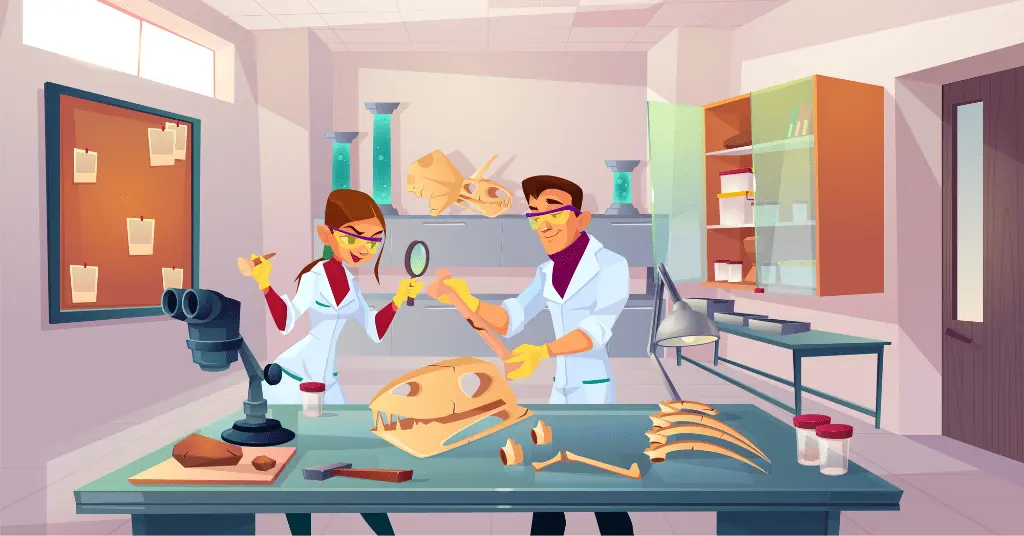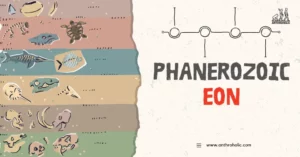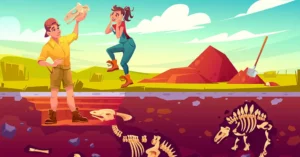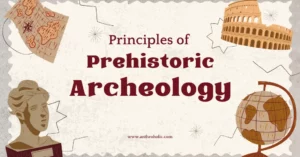AI Answer Evaluation Platform Live Now. Try Free Answer Evaluation Now
Computational Archaeology
Computational archaeology provides computer-based analytical approaches that may be used to analyze long-term human behavior and behavioral evolution. Only vocations (typically mathematical ones) that can’t be done without a computer are referred to as “computational” activities. This is akin to other sub-disciplines whose titles now incorporate “computational”

Considering that geographical studies like viewshed analysis and least-cost route analysis are so computationally complex that they would be nearly impossible to complete without a computer’s processing capabilities, geographic information systems (GIS) may be applied in computational archaeology. A lot of statistical and mathematical modeling[1], as well as computer modeling of human behavior and behavioral development utilizing software tools like Swarm or Repast, would be impossible to calculate without computational support. Utilizing software like University College London’s Space Syntax program, computational archaeology also refers to the use of a spectrum of challenging and specialized software to handle archaeological challenges involving human perception and movement within artificial environments.
One of the primary issues in collecting, recording, and studying archaeological artifacts during excavations and in museums is ceramic examination. Structured light scanning (SLS), computed tomography, and “structure from motion” (SfM) photogrammetry, as well as their combinations,[2] give huge data sets of various artifacts for use in digital pottery analysis. These approaches are progressively being introduced into the in-situ process of excavations[3].
Phases of Computational Archaeology
The phrases “archaeological informatics” or “archaeoinformatics” (commonly abbreviated as “AI,” but not to be confused with artificial intelligence) may also be used to refer to computational archaeology, depending on the source [5]
Beginnings and objectives of Computational Archaeology
It has become abundantly obvious in recent years that in order for archaeologists to fully benefit from quantitative approaches and computer technology, they must be cognizant of the specific hazards and opportunities associated with the collection and analysis of archaeological data. Identification, statistical categorization, and analysis of particular components and patterns in archaeological data are the fundamental responsibilities of AI research. The underlying study on data and processes for an independent archaeological approach to information processing involves quantitative approaches and computer technologies built expressly for addressing and comprehending archaeological concerns.Practically every branch of scientific archaeological research has the potential to benefit from and be strengthened by AI technology.
Although it looks at approaches to displaying enormous archaeological data and problem structures as computer algorithms and data structures, it goes beyond earlier attempts to quantify archaeology. It makes substantial use of the concepts and procedures that quantitative archaeology has developed since the 1960s. This permits a broad range of computer-based information processing technologies that may effectively tackle demanding issues to be employed in the domain of archaeological inquiry. Additionally, it develops ties between archaeology and other quantitative disciplines in terms of technique and software development, as well as a systematic comprehension of the research aims for the subject.
Research Themes in Computational Archaeology
There are two complementary key research themes that make up its agenda:
- A fundamental study (theoretical AI science) on the structure, norms, and possibilities of the data, inference, and knowledge generation of archaeology This study looks at the effects of size, effective sampling procedures, spatiotemporal effects, and modeling and regulating fuzzyness and ambiguity in archaeological data.
- The construction of software programs and tools (applied AI science) that provide humans access to this theoretical data
Several studies have already been done on the use of computer-based analysis and quantitative tools in archaeology. The biggest resources for following the progress of methods and applications are the yearly publications of the CAA conference (see the external links section at the bottom) (see external links section at bottom) (see external links section at bottom) (see external links section at bottom) (see external links section at bottom). Two journals that specialize in archaeological computer technology are the British Archaeological Computing Weekly and the Italian Archeologia e Calcolatori.
AI science offers a systematic method for archaeological inference and knowledge building. Its interdisciplinary nature allows it to incorporate techniques and theories from a variety of other disciplines, such as computer science (for instance, algorithm and software design, database design, and theory), geoinformation science (spatial statistics and modeling, geographic information systems), artificial intelligence research (supervised classification, fuzzy logic), ecology (point pattern analysis), applied mathematics (graph theory, probability theory), and statisticians.
See Also
References
[1] Sinclair, Anthony (2016). “The Intellectual Base of Archaeological Research 2004-2013: a visualisation and analysis of its disciplinary links, networks of authors and conceptual language”. Internet Archaeology (42). doi:10.11141/ia.42.8
[2] Karl, Stephan; Bayer, Paul; Mara, Hubert; Márton, András (2019), “Advanced Documentation Methods in Studying Corinthian Black-figure Vase Painting” (PDF), Proceedings of the 23rd International Conference on Cultural Heritage and New Technologies (CHNT23), Vienna, Austria, ISBN 978-3-200-06576-5, retrieved 2020-01-14
[3] Fecher, Franziska; Reindel, Markus; Fux, Peter; Gubler, Brigitte; Mara, Hubert; Bayer, Paul; Lyons, Mike (January 2020), “The archaeological ceramic finds from Guadalupe, Honduras: optimizing documentation with a combination of digital and analog techniques”, Journal of Global Archaeology (JOGA), Bonn, Germany, vol. 1 – via ResearchGate
[4] Trinkl, Elisabeth (2013), Interdisziplinäre Dokumentations- und Visualisierungsmethoden, CVA Österreich Beiheft 1 (in German), Vienna, Austria: Verlag der Österreichischen Akademie der Wissenschaften (VÖAW), ISBN 978-3-7001-7544-5, retrieved 2020-01-14
[5] Burenhult 2002: Burenhult, G. (ed.): Archaeological Informatics: Pushing The Envelope. CAA2001. Computer Applications and Quantitative Methods in Archaeology. BAR International Series 1016, Archaeopress, Oxford.




